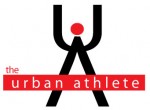Purpose: Demonstrate a case of an altered nerve tension in a runner that may be exacerbated by their running technique.
Case Details
Female, late twenties, competitive runner (sub 20 minute 5km, 1:30 half marathon, 3:15 full marathon)
Symptoms
- 2 year history of left lateral lower leg pain that comes on with running
- begins around 20-30 minutes into a run and often feels like she can’t control her leg with a sense of numbness (like she might fall)
- but no obvious swelling, shininess or pain in the anterior compartment during these bouts
Select Physical Exam Findings
- neuro screen, strength, ROM, single leg squatting, usual “functional tests” are all normal
- no significant pain on palpation of entire lower leg
- positive Slump test with a bias toward the superficial peroneal nerve. This also occurs during a straight leg raise test with a superficial peroneal nerve bias. The sensation felt is the same as that felt during running. The video below is essentially the test movement (except change the ankle dorsiflexion for plantar flexion/inversion)
Running Analysis
In the video below I noticed two things that may be significant. This runner is predominantly a forefoot striker even at slow speeds. Quite rare. She essentially reaches out for the ground with her forefoot. If you notice her knee it is actually quite extended just before foot strike. This is not normal. See a kinematic review of running here. There is usually quite a bit of knee bend before landing and of course on impact. Simply, this runner overstrides with a forefoot strike. She does this both in shoes and in socks. This position is similar to the Straight Leg Raise test with a peroneal nerve bias and it may be contributing to the “funny” feeling in the leg. A review of running biomechanics with video can be seen here.
Differentials
I can’t rule out exertional compartment syndrome but I also can’t confirm that with ease as the test would take over 3 months to get here in Toronto. And Andy Franklyn-Miller (UK sports doc with a great deal of experience studying this type of thing - website here) would suggest that this test is even questionable for this condition and we might even want to question the condition itself. So I keep the exertional compartment idea in my head and look at other possibilities.
Why I question the compartment syndrome is the positive response I get when I stress the superficial peroneal nerve with neurodynamic testing. I don’t believe that this is a classic response for exertional compartment syndrome suggesting to me that we have an altered neurodynamic on our hands.
Treatment
- explain pain, always explain pain
- at home - every hour, 5-6 nerve sliders for the peroneal nerve (video below but don’t dorsiflex the foot)
- running changes: this is tough but our runner is working on a midfoot strike and is trying to cue the idea of landing behind her (this is impossible but it can get the idea across).
- I also treat the “container” of the nerve. I do gentle soft tissue work (I used to be an A.R.T guy but I am much gentler now and don’t believe the theory they propose) along the entire sciatic nerve. I think that I am really the nervous system and ultimately influence the muscle and the peripheral nerves with my manual therapy. You can explain this treatment anyway you like. I choose a neural based explanation rather than thinking that I am digging out adhesions.
 - I believe runners should be strong. And not just runner strong - athlete strong. This runner has had previous high hamstring tendinopathy/tearing (or possibly sciatic nerve or all the little nerves back there irritation) so she is on a heavy resistance training program for everything. I don’t emphasize anything - I just train for balance, capacity and variety. She gets exercises like one leg deadlifts, deadlifts, squats with bands, hip thrusts, hip airplanes, bridges, clamshells, one leg squats, one leg lateral wall squats, nordic hamstrings, push ups, suitcase carries etc. Click here for a “hamstring” injury for runners sample program for videos
- I believe runners should be strong. And not just runner strong - athlete strong. This runner has had previous high hamstring tendinopathy/tearing (or possibly sciatic nerve or all the little nerves back there irritation) so she is on a heavy resistance training program for everything. I don’t emphasize anything - I just train for balance, capacity and variety. She gets exercises like one leg deadlifts, deadlifts, squats with bands, hip thrusts, hip airplanes, bridges, clamshells, one leg squats, one leg lateral wall squats, nordic hamstrings, push ups, suitcase carries etc. Click here for a “hamstring” injury for runners sample program for videos
Is she better?
Sorry, don’t know yet. Just started. Any ideas please let me know. I can say that after I gently treat the region around the sciatic, tibial, peroneal nerve we are able to decrease the sensitivity associated with the SLR testing. This is a good sign. I am cautiously optimistic.



